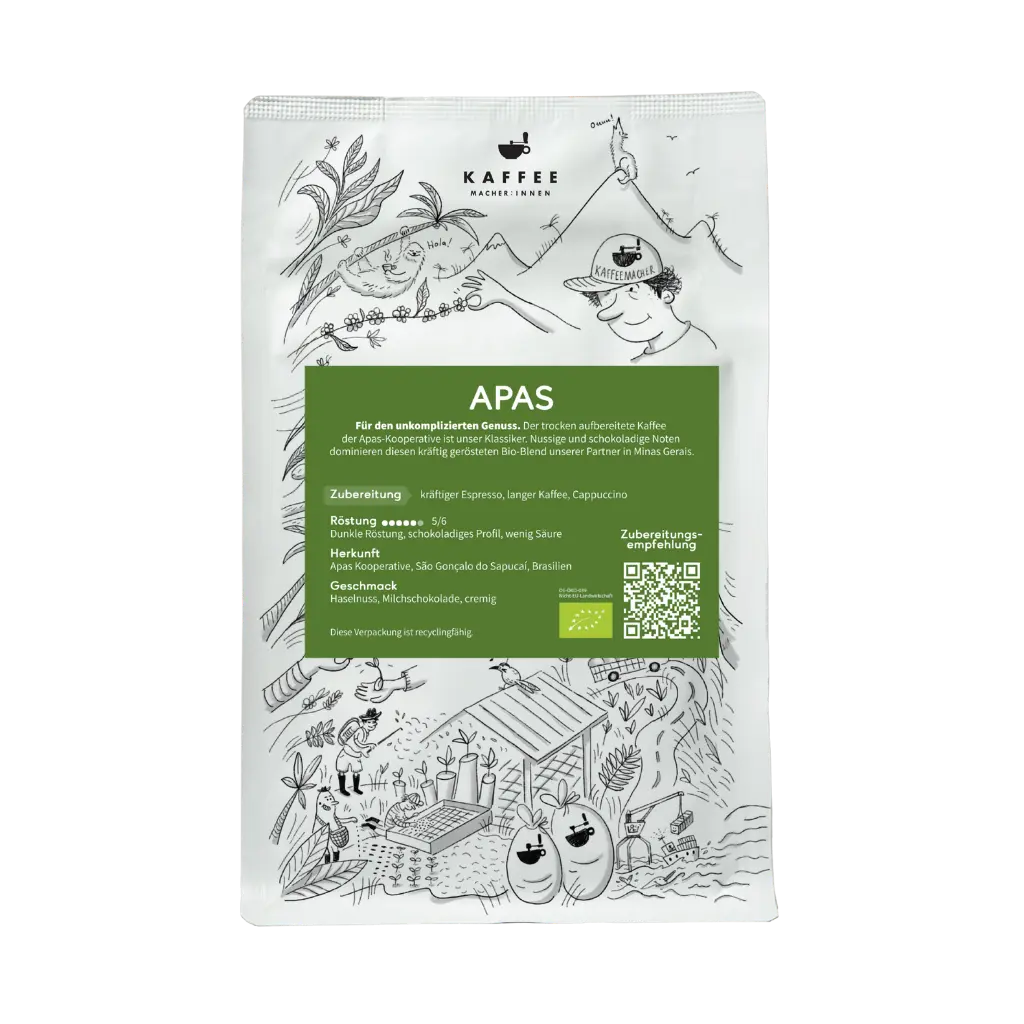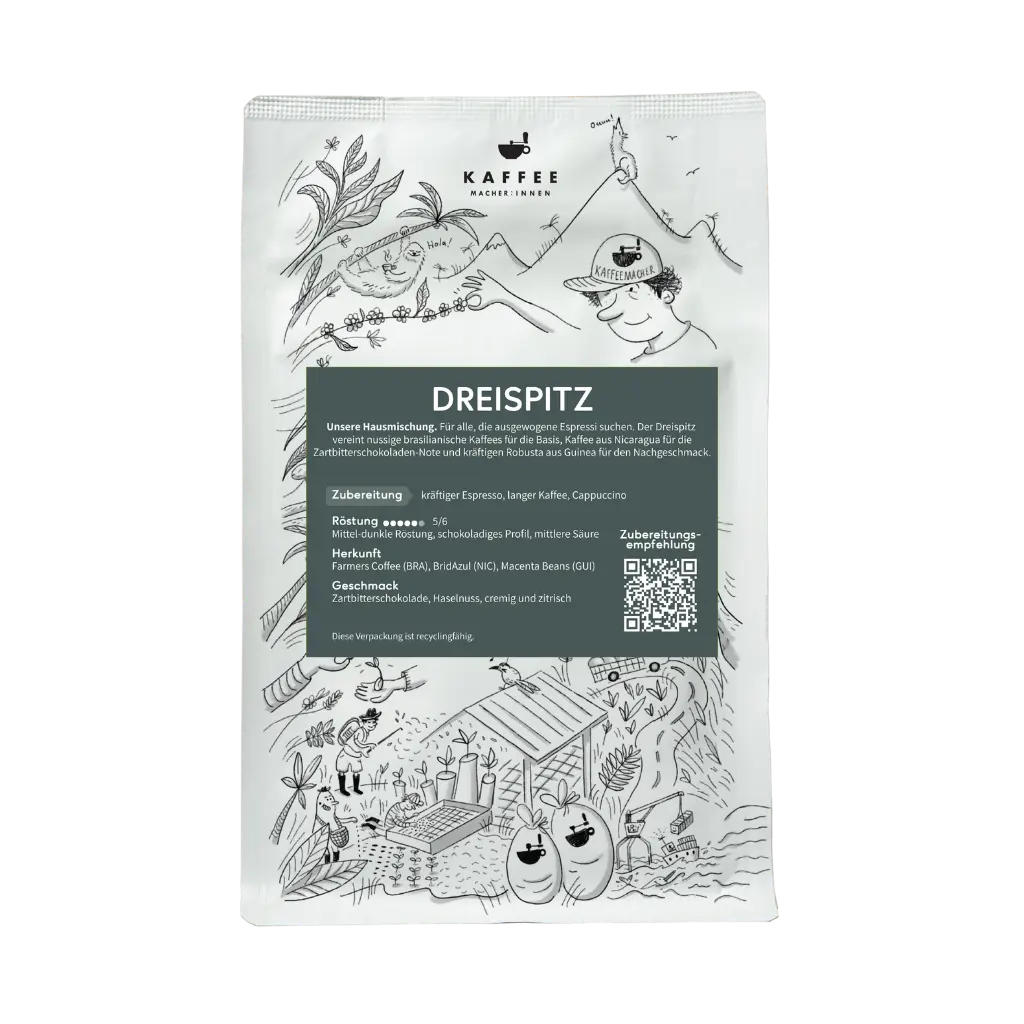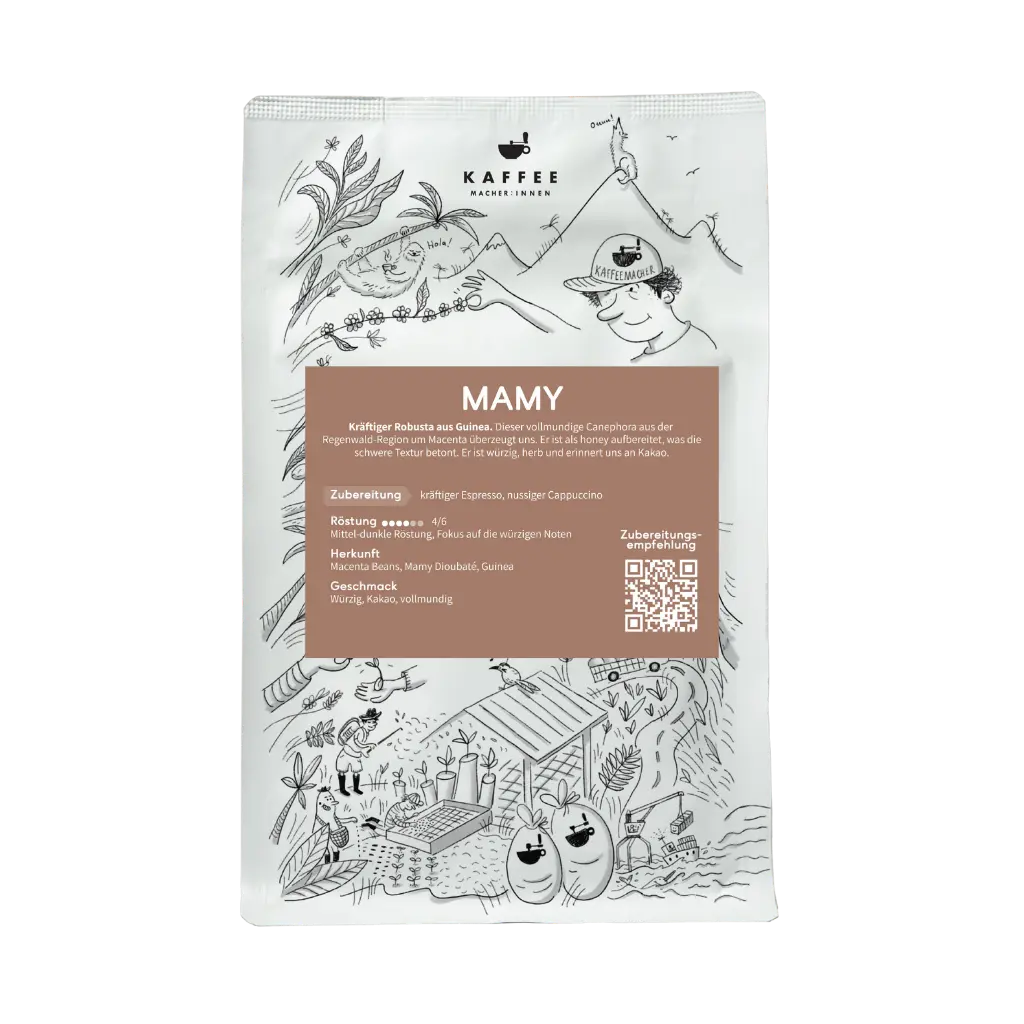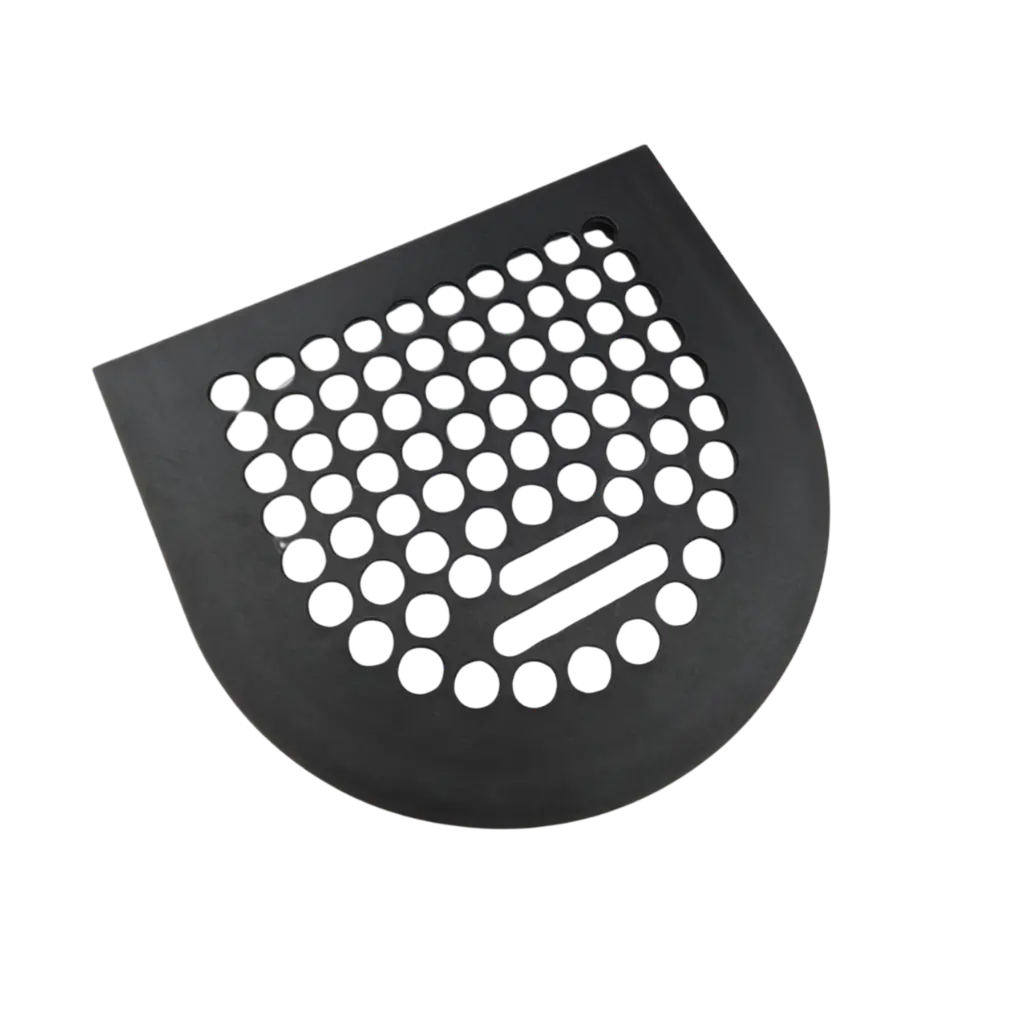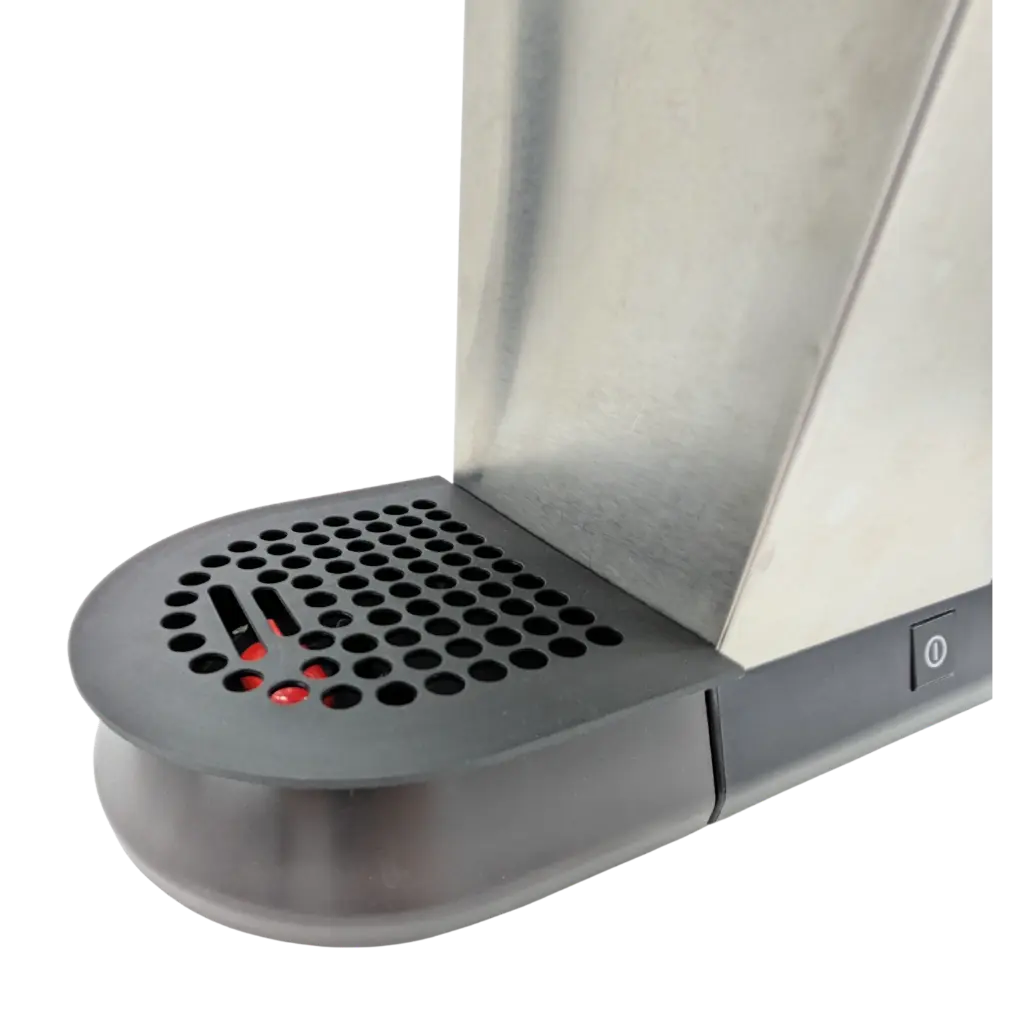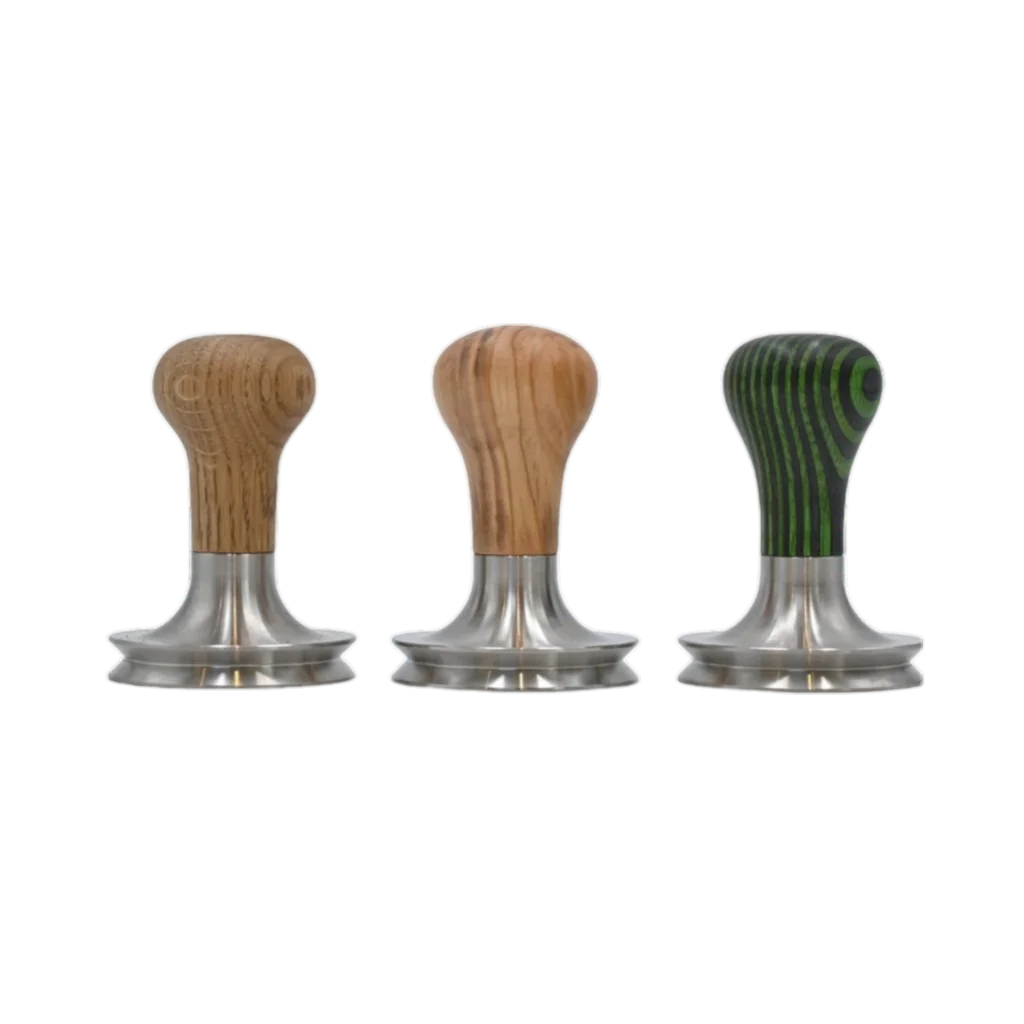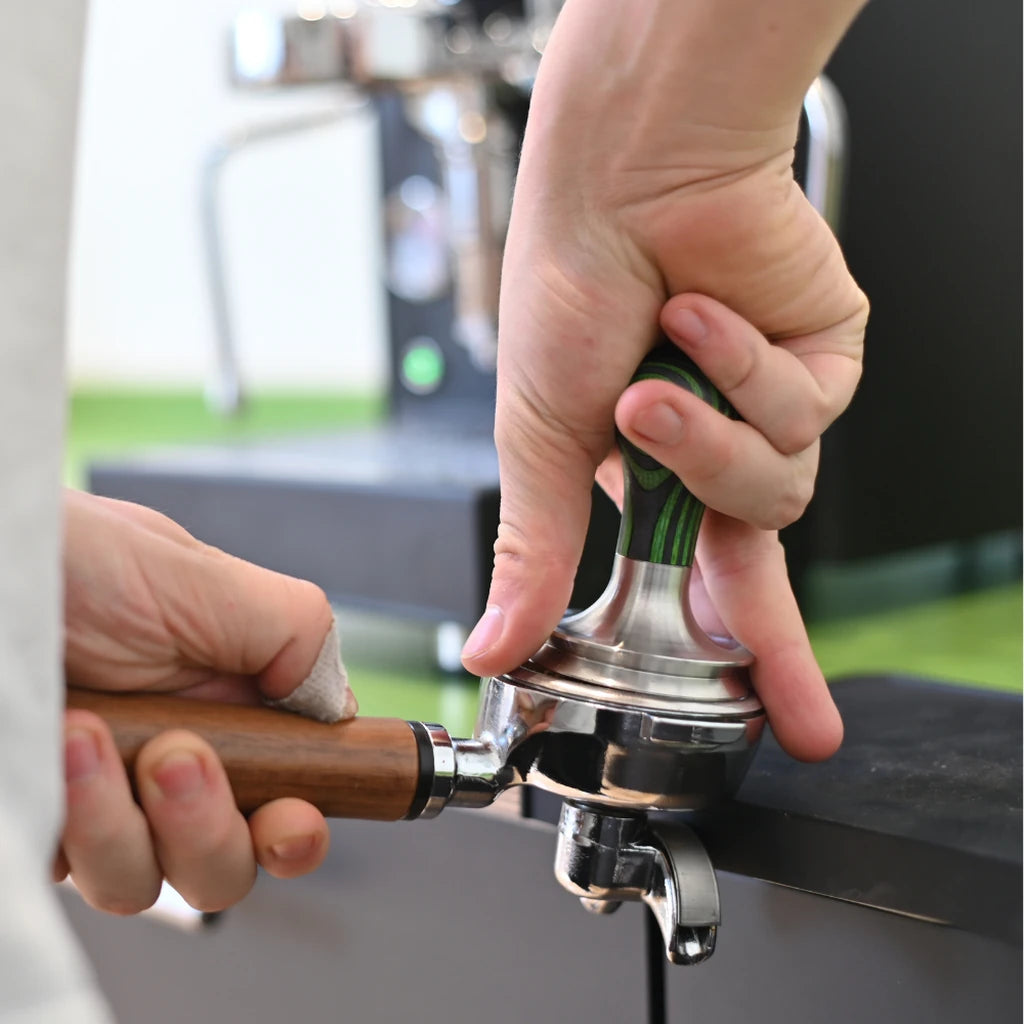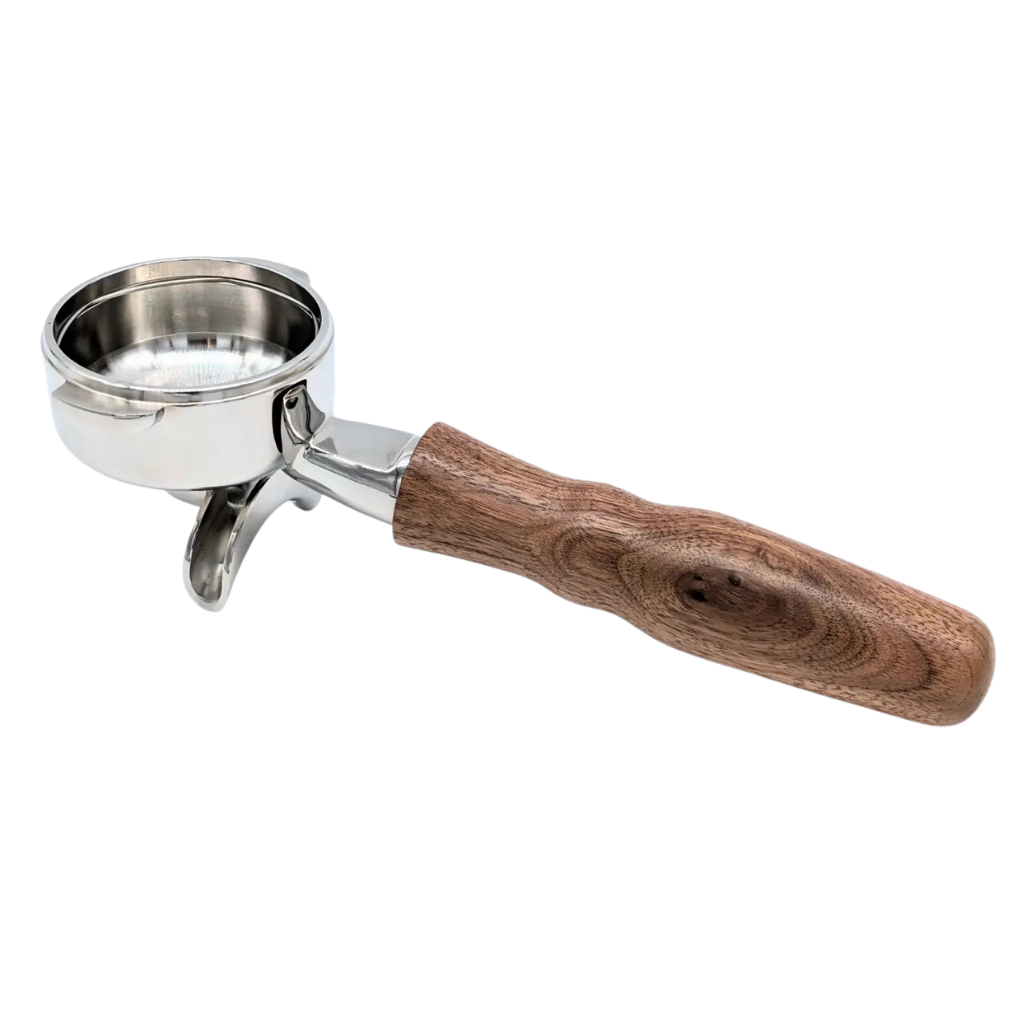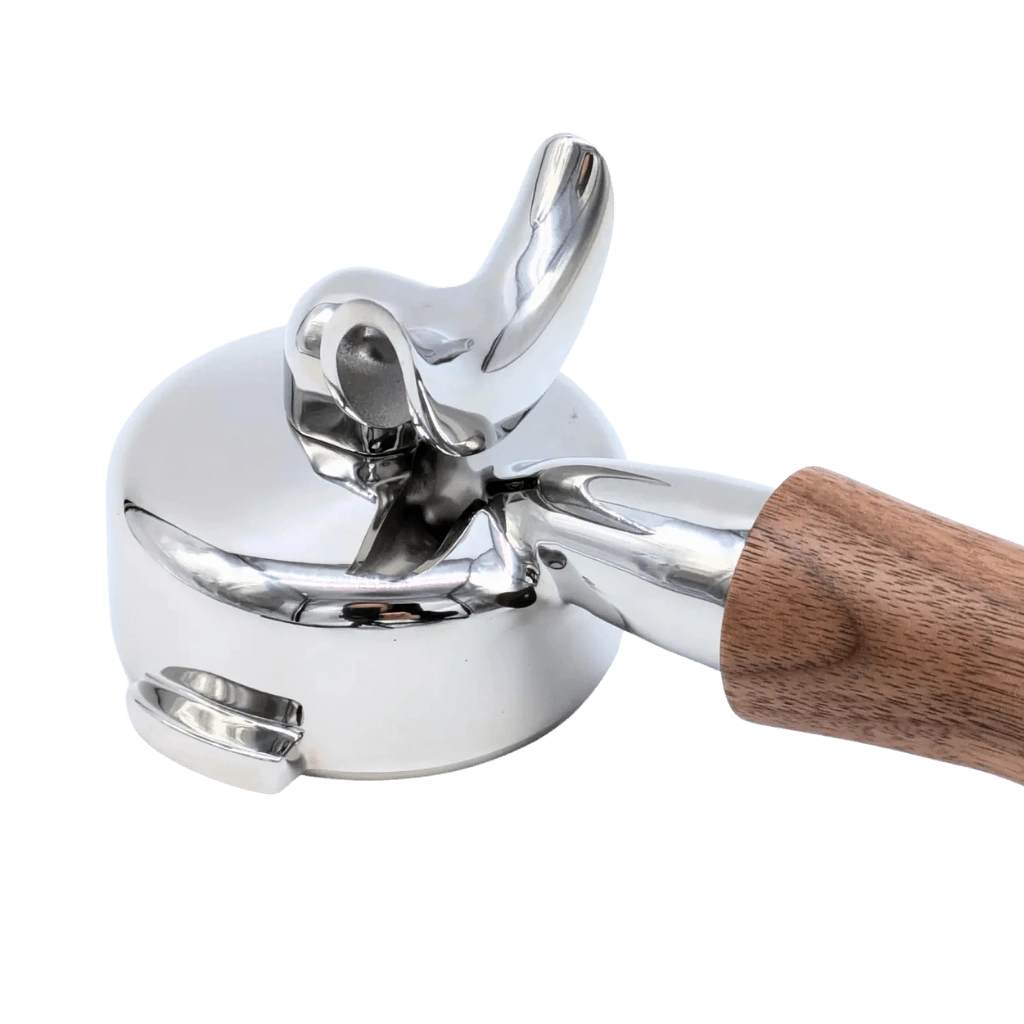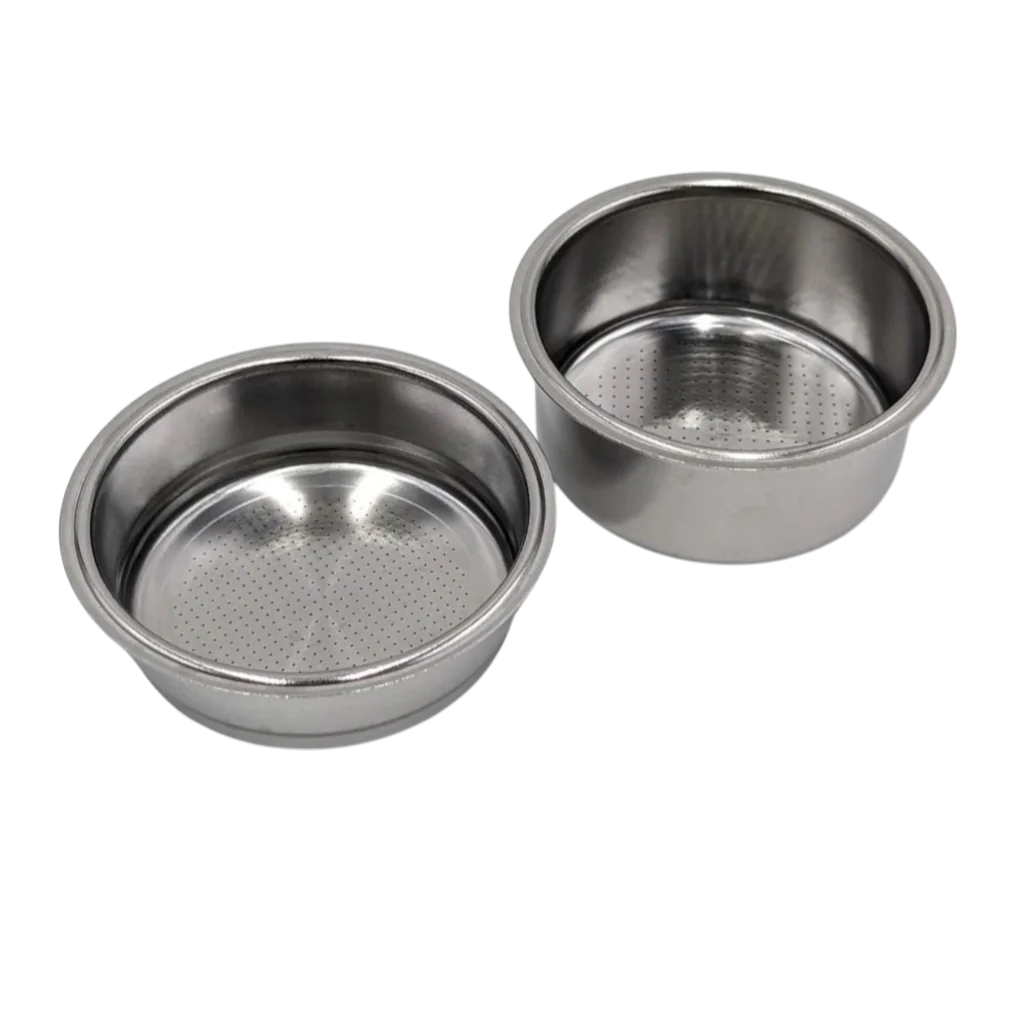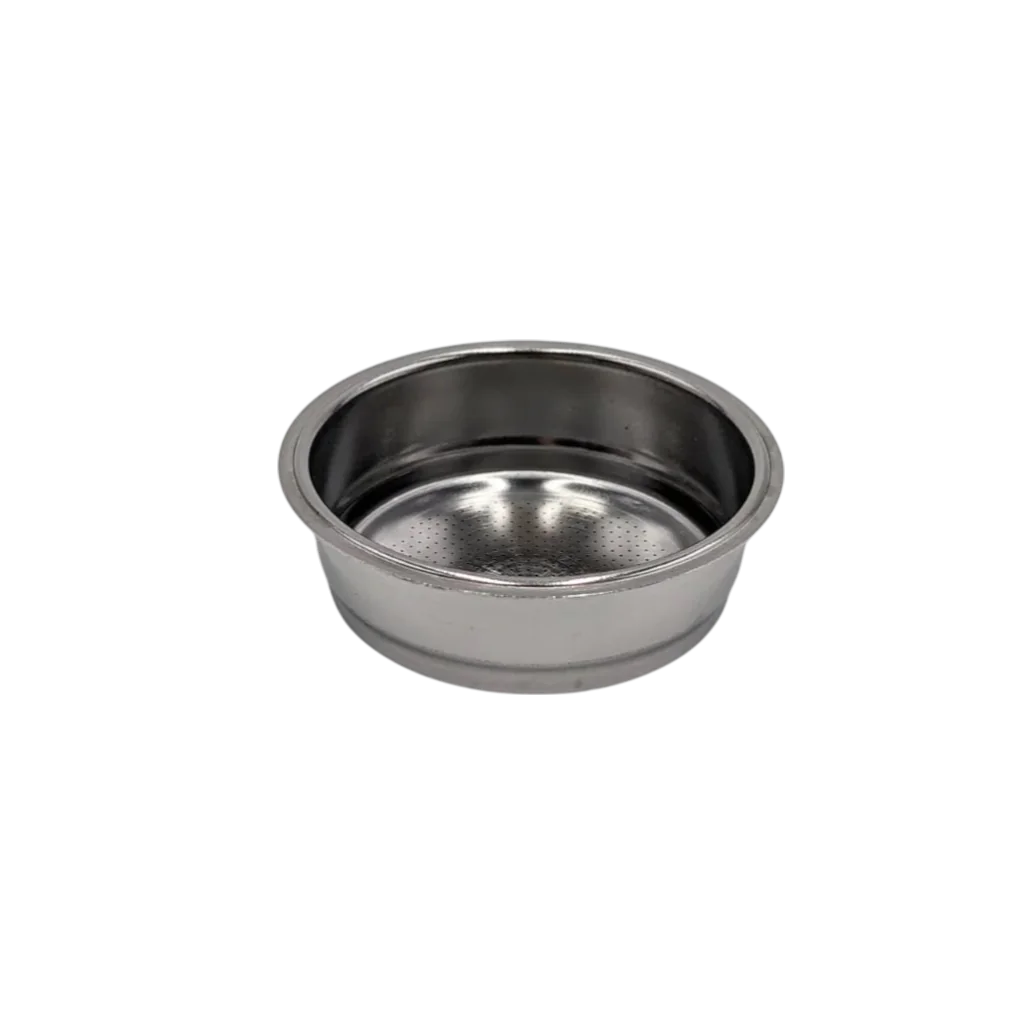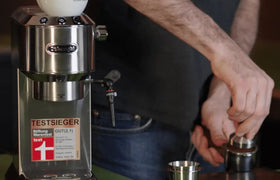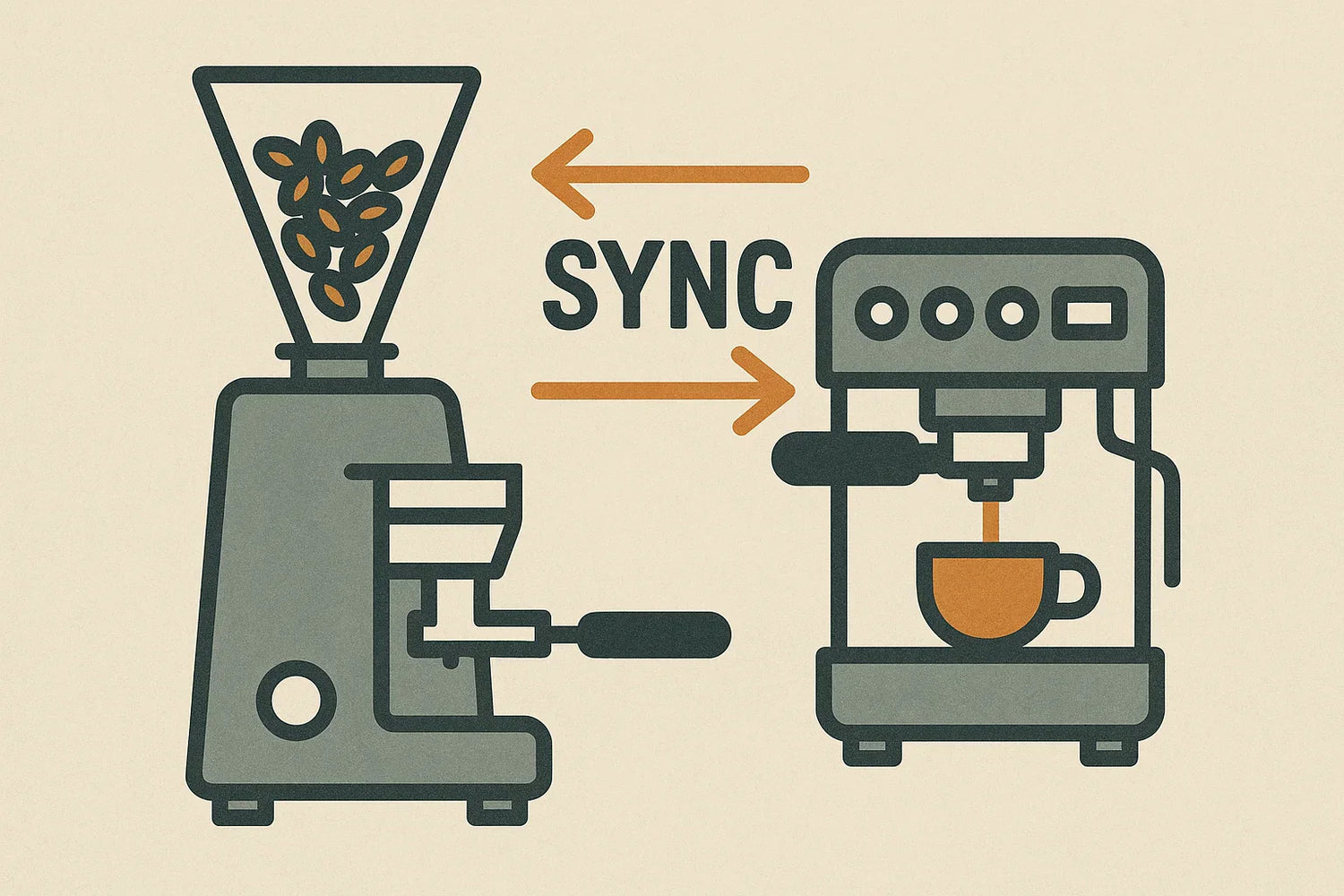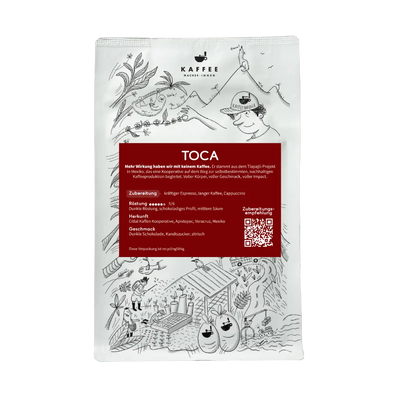What is Grind-by-Sync? Espresso machines and grinders for home use that communicate with each other. The grinder–machine combo detects whether the espresso runs too fast or too slow and automatically adjusts the grind size. After 15 years of experience in the professional sector, this technology is now making its way into our homes. But honestly – do we really need it? Does the system actually work at home, when we only pull a few shots a day? Which machines and grinders have the potential to brew espresso quickly and well?
Or is it just another marketing hype to lure coffee drinkers away from fully automatic machines to semi-automatic ones – without truly improving cup quality?
In this article, I take a closer look at the technology, provide a critical assessment, and outline a checklist of what I expect from a well-functioning grinder–machine combination. And let’s be clear: if a grinder needs 100 grams of coffee just to dial in an espresso, your system doesn’t work!
The Promise: Never Adjust Grind Size Again
“Wonderful, synchronization!” you might say. But it’s not that simple. There are countless pitfalls, as we’ve seen over the years when syncing grinders and espresso machines in commercial settings. The technology promises to automatically compensate for fluctuations caused by bean aging, humidity, or bean changes, keeping extractions “on target.” But how much coffee does it take for the grinder to learn? How many shots do you even make at home to give the system enough data? And do you still have to set the grinder’s base adjustment manually?
How It Works – In Theory
The espresso machine measures key parameters during brewing – flow rate, time, extraction behavior – and sends this data to the grinder. If the extraction deviates from target values, the grinder automatically adjusts the grind size. Many machines, however, only measure total flow volume, not milliliters per second, which limits precision.
Technical Requirements for Grind-by-Sync to Work
For synchronization between grinder and machine to work, both sides must meet certain requirements. I distinguish between basic prerequisites and ideal criteria that enable better control and coordination during brewing.
What the Grinder Needs:
- Grind-by-weight functionality (absolutely essential!)
- Electronically adjustable grind setting
- Communication interface with the machine (serial, Wi-Fi, Bluetooth)
What the Machine Needs:
- Precise volumetrics (without this, the grinder receives false signals)
- Stable extraction parameters (pressure, temperature, flow)
- Ideally: sensors for flow and dynamic pressure/flow control
Why Grind-by-Weight Is Essential
Without grind-by-weight, the system simply doesn’t make sense. Why? When the grinder adjusts its burr gap, the coffee output also changes in timed grinders. Finer grind means less output, which distorts the brew ratio – throwing extraction completely off. You’re adjusting two parameters at once – a no-go for consistent results.
An electronically adjustable grind size is also a prerequisite, but that goes without saying.
Current Systems at a Glance
Mahlkönig Xenia & E64 WS Home – The German Precision Approach
Mahlkönig has acquired not just a machine but an entire platform with the takeover of Xenia. The Xenia remains a technically independent system with thoughtful details: two stainless steel boilers, an actively heated brew group, and a relatively quick heat-up time. It’s also capable of pressure profiling.
The E64 WS Home (“Weight & Sync”) brings Mahlkönig’s grind-by-weight technology to the home market for under €1,000. The system here is called “Grind-by-Sync”: the Xenia measures during brewing and sends data to the grinder, which automatically adjusts the grind size.
Price: Xenia Dual Boiler approx. €2,999; E64 WS €999. Availability: E64 WS launches in November, Xenia production starts in December with first deliveries by January.
Quick Mill & Eureka Tio – The Italian Surprise
A collaboration we didn’t expect: Quick Mill and Eureka present the Tio – a coordinated system. The machine (1.4 L steam boiler, thermoblock for the brew group) has been cleverly redesigned by Quick Mill: instead of the proprietary bayonet group, it now uses a standard 58 mm portafilter – making everyday use far more flexible.
The Eureka grinder builds on the well-known Libra, upgraded with larger burrs, an integrated scale, and Eureka’s Smart Technology, which already offers user feedback. The system works with a “2–3 second rule”: if extractions fall outside the target range for three consecutive shots, the grinder automatically adjusts the grind size.
Price: approx. €2,600 for the machine and €800 for the grinder. Launch: Q1 2026.
Other Players
Nunc: Technologically the most advanced. Bidirectional communication, large data storage for previous extractions, and likely AI-supported learning. Plus, “nunc.” beans can be used – known to the machine for easier calibration. Production has reportedly started, but deliveries remain slow.
Sage/Breville Oracle Dual Boiler: The pioneer of integrated grinders. Reacts with delay and adjusts finer or coarser when shots are far outside the range.
Rocket: Already implements this technology in collaboration with Bentwood for commercial machines. A home version will likely pair their new grinder with a volumetric machine such as the Bicoca.
The Reality Check: What Manufacturers Don’t Tell You
The 60-Gram Problem
Let’s do the math: most systems react only after two or three failed shots. At 18–20 grams per espresso, that’s 60 grams of coffee before the grinder even reacts. With a 250 g bag costing €10–20, that’s frustrating. And even then – does the next shot actually hit the target? If not, you’re quickly 80 grams in the bin.
The Difference Compared to Commercial Use
In cafés, we pull one shot after another. The grinder continuously self-adjusts throughout the day. At home? Rarely. So how effectively can a system recalibrate with only occasional use? How accurately does it adjust the grind? And what happens with grinders that have retention – does the leftover coffee from the previous grind still influence the next shot?
The Technology Only Works with Regular Use
This technology simply doesn’t work if you “pull three shots over three days.” If beans sit in the hopper for days, the grind and extraction will shift anyway – manual correction remains essential.
Base Calibration Still Needs to Be Done by Hand
As of now, you’ll still have to manually set the grinder’s baseline yourself. If coffee is brewed regularly, the synchronized grinder–machine combo can then show its strengths – but it’s not fully automated magic.
Who Actually Benefits?
Useful Scenarios:
- Households with several coffee drinkers – one sets it up, everyone benefits
- Offices and shared spaces – frequent shots, consistent quality
Less Useful For:
- Beginners – you still need to learn basic calibration
- Occasional drinkers – too few shots for the system to adapt meaningfully
- Purists – who see dialing in as part of the ritual
Our Test Protocol: How We’ll Evaluate the Systems
- The Stress Test: Drastically change grind size (15 sec shot → target 25 sec)
- Measurement: How many shots or grams are needed until the system hits target?
- Everyday Use: Morning, midday, and evening shots over several days
- Consistency: How stable are extractions under changing humidity and static conditions?



